“French speaking countries in Africa have always enjoyed a special relationship with their former colonial master. French influence in those countries remained strong even after independence, with currencies tied by a fixed exchange rate to the French franc, military agreements allowing the stationing of French intervention forces in Africa, and a strong presence of French companies in Francophone territories.”
– Emmanuel Wongibe, editor, Radio Deutshe Weller International
Buenos Aires – Fifty years have passed since the fall of French Equatorial Africa, splitting apart into separate states, tossing off the yoke of French colonial masters. Likewise in the neighboring Congo, and not far away in western Africa, in Mauritania. It seemed as good a moment as any to explore the flavors that spring from the combination of African tradition with French colonial cuisine.
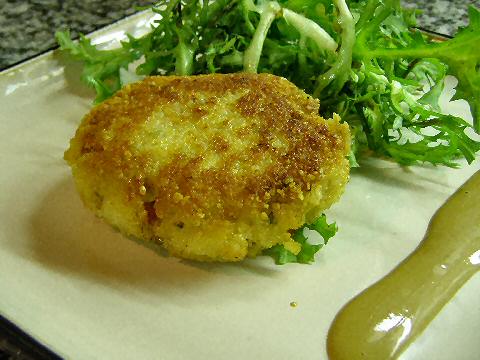
Starting off in the nation of Chad, two key ingredients struck my fancy – dried smoked trout, as a way of preserving them, and millet, a cereal grain that one rarely sees used outside of vegan cooking. In fact, several people I mentioned it to seemed to think it was only for use as bird feed, but no, millet is actually quite nutritious and delicious! I decided to go with fresh trout and millet, and make something approximating a crab cake. First I cooked the millet – a quick and easy boiling process, taking no more than about 10-15 minutes. I let it cool and then mixed it with chopped fresh trout, onion and red bell peppers, minced garlic and basil, a little hot paprika, lemon juice, smoked salt, pepper, and some beaten egg. All mixed together well, then formed into patties, rolled in breadcrumbs, and left to sit in the refrigerator for a couple of hours to firm up a little. I fried them in a mix of butter and oil, served them with a salad of frisee and arugula tossed with just a little olive oil, and on the side, a spicy sauce made of green tea, tahini, ginger, soy sauce, lemon juice, molasses, and ground habanero pepper.
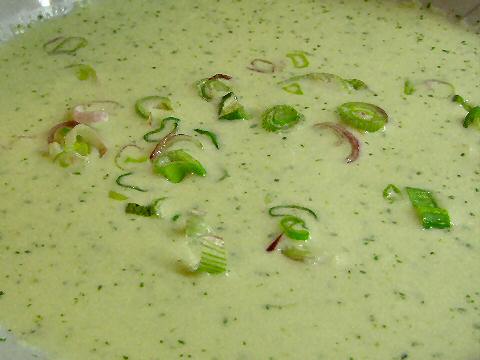
Moving on to Gabon, and starting with the idea of a simple salad, I gather made of little more than crushed or grated cucumber with chilies, garlic and vinegar. As usual, we like to offer up a soup, and with recent hot weather, a cold cucumber soup sounded like a good move. Into the blender went peeled cucumbers, ginger, garlic, lots of mint leaves, and a very small chili pepper. I pureed that, added “half-and-half” here that means adding equal parts of milk and cream, seasoned to taste with salt and white pepper, and served it simply topped with chopped green onions.
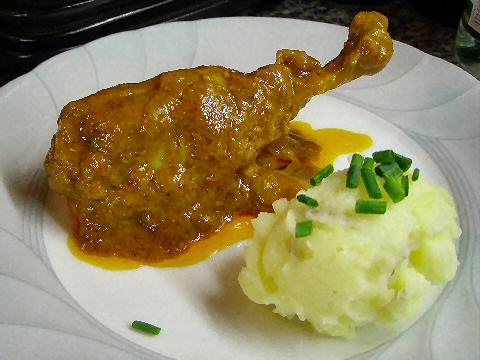
While the judges on
Top Chef last season may have poo-pooed the idea of combining tomatoes and peanuts in a sauce, I have to assert it was just the particular dish they were dealing with. African cuisine abounds with dishes that use both, from soups to stews to sauces. Starting from a traditional dish of the Congo that uses chicken stewed slowly in just such a combination, I decided to up the ante slightly and use duck. I separated duck legs into their two sections, browned them with some onions in a little oil, then covered them with water, covered the pot, and let them simmer away over low heat for just over an hour. I removed the legs to one side, and into the pot went some white wine, plenty of cayenne pepper, about a cup of tomato paste and an equal amount of pure peanut butter, a little nutmeg and black pepper. Turning the heat up high, I cooked that all down until the sauce was reduced by about half, stirring regularly to make sure the peanut butter doesn’t lump together and burn. For service, the duck legs went back into the sauce, reheated to just a simmer. While traditionally served with
yuca root, it’s out of season here, and what’s available is fibrous and/or rotting – so simple mashed potatoes on the side did the trick.
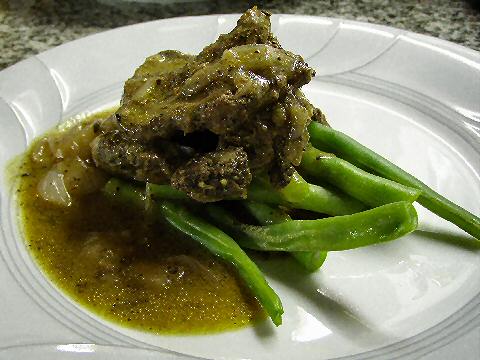
Mauritania has a quite different cuisine from the central African countries we’d started with. Having a more Arabic influence, and, in fact, that’s the major language of the country, as opposed to French in the other three, much of the food is reminiscent of dishes I’ve seen from Morocco. One, quite different, caught my eye – a beef dish stewed in coconut and mixed peppers. I decided on a style more like a traditional pepper steak – I ground together black pepper, allspice, coconut, and salt, and rubbed the beef with it. I left that to sit for several hours. In a dutch oven I sauteed thin wedges of red onion in a mix of olive and dende (palm) oil, then added the beef and cooked to lightly brown. Topped up with a little water, I turned the heat down low and let the beef (rib-eye steak) braise for about 45 minutes until nice and tender. Removing the beef to the side, I thickened the remaining liquid with a
beurre manié, a paste of equal parts butter and flour (which helps stop the flour from clumping, and adds richness to the finished sauce), and served the beef, onions, and sauce over some blanched and then sauteed green beans.
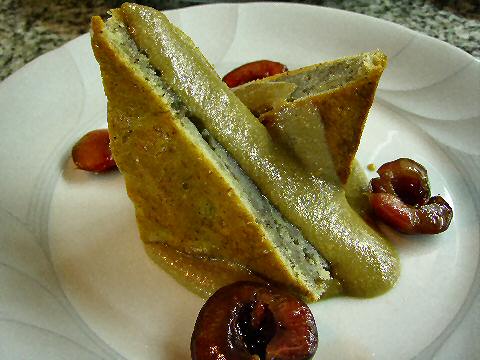
Finishing off, without a fifth country to explore (at least one that was celebrating 50 years of independence), I decided on a simple banana dessert. A sheetcake cut into triangles (1¾ pastry flour, 2¾ teaspoons baking powder, ½ teaspoon salt,
1?
3 cup cream cheese,
2?
3 cup sugar, 1 teaspoon cinnamon, ½ teaspoon mace, ½ teaspoon nutmeg, 2 eggs, 4 very ripe bananas – all whipped together and then baked in a hot oven until puffed and brown). Over and under the cake, a simple sauce made from boiling together ½ cup cream cheese, ½ cup butter, 1 cup brown sugar. A few kirsch marinated cherries rounded out the dish.










Very interesting information and the pictures you have here are so beautiful! This is my first time to drop by your blog and I’ll definitely comeback and read on your older posts. Cheers!
Thanks! Glad you enjoyed it – it was a fun dinner to put together.